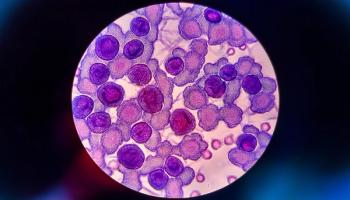
- July 2015 Digestive Health
- Volume 81
- Issue 7
Diarrhea: Preventable and Treatable
Although diarrheal disease Is preventable and treatable, it affects billions of individuals annually.
Although diarrheal disease Is preventable and treatable, it affects billions of individuals annually.
Patients who experience diarrhea are depleted of body fluids, resulting in profound dehydration and possible death.1 With nearly 1.7 billion cases of diarrheal disease diagnosed annually, pharmacists can play an important role in the battle against this disease.2
Background
Diarrhea is defined by the World Health Organization as “the passage of 3 or more loose or liquid stools per day, or more frequently than normal for the individual.”2 This disease is associated with several symptoms, including abdominal cramps, fever, nausea, vomiting, fatigue, and urgency.3 Further classification of diarrhea into subgroups—acute, persistent, and chronic—are based on the amount of time patients experience the disease (Table 13).
Although this disease is both preventable and treatable, it remains the second leading worldwide cause of death of children younger than 5 years.2 Annual cases worldwide have been reported in the billions; however, this number may be grossly underestimated due to a large amount of individuals who do not visit a health care provider for management of the disease.
Etiology
Each case of diarrhea has either an infectious or noninfectious etiology. Infectious causes include the transmission of viral, bacterial, or parasitic pathogens (Table 21). In addition, nearly 90% of diarrhea-associated deaths can be attributed to unsafe water, inadequate sanitation, and insufficient hygiene.1 The microorganisms associated with the development of infectious diarrhea are often spread via the fecal-oral route and can be found in food, water, or on the surface of various objects.
Noninfectious causes of diarrhea include food allergies, inflammatory bowel disease, irritable bowel syndrome, alcohol ingestion, and medications4 (Online Table 35). Diarrhea is a frequent drug adverse effect (AE), with antimicrobials accounting for approximately 25% of all drug-induced diarrhea cases.6
Table 3: Drug-Induced Diarrhea Medication
Antibiotics (eg, erythromycin, amoxicillin-clavulanate,)
Chemotherapy (eg, irinotecan, 5-FU, capecitabine)
Antibiotics (eg, erythromycin, amoxicillin-clavulanate)
Anti-inflammatory agents (eg, NSAIDs, colchicine,
Anti-arrhythmics (eg, quinidine, digitalis)
Endocrine agents (eg, acarbose, Orlistat, Metformin)
Gastrointestinal agents (eg, Ranitidine, Omeprazole, Reglan)
Adapted from reference 5.
Prevention
As mentioned previously, diarrhea is a preventable disease. The rotavirus is the most common cause of acute diarrhea, and 2 oral vaccines have been approved in the United States for its prevention.7 These vaccines are live, oral vaccinations administered in the first year of life, on a specific schedule according to which vaccine is used.
It is also recommended that individuals wash their hands frequently and use hand sanitizer when the former is unavailable. To guard against food contamination, food should be served soon after preparation or refrigerated; work surfaces should also be washed frequently.
Traveler’s diarrhea is a major concern and can be prevented by monitoring your food and water consumption. While traveling, food should be well cooked, and raw fruits and vegetables should be avoided.7 Individuals are encouraged to consume bottled water and avoid tap water and ice cubes. These measures will help minimize the risk of developing traveler’s diarrhea and other foodborne and waterborne infections.7
Diarrhea Treatment
The majority of cases of acute diarrhea are self-limiting in nature and can be effectively managed with electrolyte replacement and dietary changes.8 Nonprescription antidiarrheal medications can also be used in the management of acute and chronic cases, but patients and pharmacists and/or physicians must carefully consider the safety and efficacy of their administration. There are numerous nonprescription antidiarrheals on the market, and the majority of them contain bismuth subsalicylate or loperamide.8
Bismuth Subsalicylate
Bismuth subsalicylate is used to treat heartburn, upset stomach, and diarrhea in adults and children 12 years and older.9 Although its exact mechanism of action has yet to be determined, bismuth subsalicylate is thought to exert its antidiarrheal activity through several methods. It decreases the flow of fluids and electrolytes into the bowel, inhibits inflammation of the intestine, and is believed to have a bactericidal activity on organisms that are known to cause diarrhea.9
Patients with a history of salicylate allergies, a history of ulcers or coagulation abnormalities, or medical conditions such as arthritis, diabetes, or gout should avoid use of this product.9 Children or teenagers recovering from the flu or chickenpox should also avoid this product as the salicylates can cause Reye’s syndrome, a serious and sometimes fatal condition.7
Loperamide
Loperamide is an OTC medication used to manage acute and chronic diarrhea. This medication is a peripherally acting mu opioid receptor agonist that acts directly on circular and longitudinal muscles in the intestine resulting in peristalsis inhibition and prolonged transit time. Loperamide also decreases fecal volume and fluid electrolyte loss while increasing fecal viscosity.7
Loperamide is not recommended for use in children younger than 6 years unless taken under direct physician supervision.7 It is also not to be used in individuals with fecal leukocytes or fever or in patients experiencing blood or mucus in their stool. Common AEs associated with the medication’s use include constipation, dizziness, and drowsiness.7 Although this drug is a mu opioid agonist, it has limited ability to cross the blood—brain barrier, thus decreasing its potential for addiction or misuse.10
Role of the Pharmacist
Although diarrhea is often seen as a “nuisance disease,” self-management is only considered safe and effective for acute diarrhea that has lasted no longer than 48 hours.12 Use of these agents is solely for symptomatic management, and specific treatment should be aimed at the underlying etiology when possible. Pharmacists are encouraged to provide adequate education to patients who use antidiarrheals. Pharmacists should also be able to identify patients who are not candidates for antidiarrheal medications and refer them to their primary care provider for further treatment.
Dr. Moore is an assistant professor at Howard University College of Pharmacy.
References
- Global diarrhea burden. Centers for Disease Control and Prevention website. www.cdc.gov/healthywater/global/diarrhea-burden.html. Updated January 24, 2013. Accessed June 10, 2015.
- Diarrhoeal disease. World Health Organization website. www.who.int/mediacentre/factsheets/fs330/en/. Published April 2013. Accessed June 10, 2015.
- Ochoa B, Surawicz CM. Diarrheal diseases — acute and chronic. American College of Gastroenterology website. http://patients.gi.org/topics/diarrhea-acute-and-chronic/. Published October 2002. Updated December 2012. Accessed June 10, 2015.
- Deshpande A, Lever DS, Soffer E. Acute diarrhea. Cleveland Clinic Center for Continuing Education website. www.clevelandclinicmeded.com/medicalpubs/diseasemanagement/gastroenterology/acute-diarrhea/. Accessed June 10, 2015.
- Diarrhea secondary to medications. Family Practice Notebook website. www.fpnotebook.com/gi/Pharm/DrhScndryTMdctns.htm. Accessed June 10, 2015.
- Chassany O, Michaux A, Bergmann JF. Drug-induced diarrhea. Drug Saf. 2000;22(1):53-72.
- Diarrhea. National Institute of Diabetes and Digestive and Kidney Diseases website. www.niddk.nih.gov/health-information/health-topics/digestive-diseases/diarrhea/Pages/facts.aspx. Published January 2011. Updated November 25, 2013. Accessed June 10, 2015.
- Terrie YC. Antidiarrheal products. Pharmacy Times website. www.pharmacytimes.com/publications/issue/2007/2007-11/2007-11-8228. Published November 1, 2007. Accessed June 10, 2015.
- Bismuth subsalicylate. www.nlm.nih.gov/medlineplus/druginfo/meds/a607040.html. US National Library of Medicine website. Updated February 1, 2011. Accessed June 10, 2015.
- Meyer DW. Loperamide in opioid withdrawal. Grey Pages website. http://derekwmeyer.blogspot.com/2010/11/loperamide-bottle-day-keeps-sickness.html. Published November 26, 2010. Accessed June 10, 2015.
Articles in this issue
over 10 years ago
Common Hormonal Disorder Increases Disease and Hospitalization Riskover 10 years ago
Menstrual Pain Exacerbated by Smokingover 10 years ago
Sugary Beverages May Hasten Onset of Menstrual Cycleover 10 years ago
Cancer Care: The Role of Specialty Pharmacyover 10 years ago
Termination of Pharmacist for Firing Gun While on Dutyover 10 years ago
Generic Product News (July 2015)over 10 years ago
How Do Generic Drug Appearances Affect Patient Adherence?over 10 years ago
Effort to Curb Rising Generic Drug Costs Reaches Congressover 10 years ago
Robotic Pills Could Simplify Administration of Biologic DrugsNewsletter
Stay informed on drug updates, treatment guidelines, and pharmacy practice trends—subscribe to Pharmacy Times for weekly clinical insights.


















































































































































































































